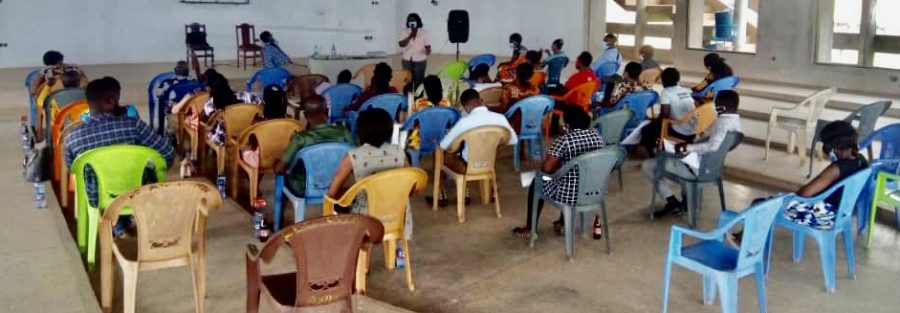Results from a 3rd round of scorecard assessment in the Western and Western North Regions on the readiness of health facilities to provide malaria services as well as client’s perspectives on malaria care has been disseminated.
11 CHPs compounds namely Kwawkrom CHPS, Antobia CHPS, Puakrom CHPS, Apewosika CHPS, Abroakofe CHPS, Ayiem CHPS, Kwafukaa CHPS, Dadwen CHPS, Kegyina CHPS, Ewuku CHPS and Dominase CHPS were assessed. 7 health centres namely Suiano Health Centre, Adum Banso clinic, Mpohor Health centre, Bodi Health Centre, Boinzam Anglican Clinic, Mamudukrom Clinic and Bopp Health Centre were assessed. 2 hospitals namely Axim Government Hospital and Juabeso Government Hospital were assessed.
Participants at the dissemination meetings in the 4 project districts; Bodi, Juaboso, Mpohor and Nzema East, included the District Health Directors, District Malaria Control Officers, District Health Information officers, District Disease Control officers, Facility heads of selected health facilities, Municipal Assembly representatives, Community Members and traditional/ religious/ Opinion leaders.
Highlights of the scorecard results indicates that the overall performance from the clients’ scorecard assessment showed improvements in the 3rd round of assessment compared to the 1st round of assessment for all 11 CHPs compounds. None of the 11 CHPS compounds met the 80.0% target during the 1st round of assessment, however, 10 of the 11 CHPs compounds met the target at the 3rd round of assessment except Kwawkrom CHPS compound. For facility accessibility, all the 11 CHPS compounds saw an increase in performance from the 1st round to the 3rd round. Ten of the 11 CHPs compound also saw an increase in performance for access to drug and information and provider-client interactions from the 1st round to the 3rd round except for Kwawkrom CHPs compound which had a decrease in performance.
The overall performance from the clients’ scorecard assessment showed improvements in the 3rd round compared to the 1st round for all 7 health centres although Bopp and Mpohor health centre had higher performance scores during the 2nd round of assessment compared to the 3rd round. With the exception of Adum Banso clinic and Mpohor health centre, the rest of the five health centres saw an improvement in the performance for facility accessibility from the 1st round ratings to that of the 3rd round. All seven health centres saw an increase in the performance when it comes to access to information and drugs among clients during the 3rd round compared to the 1st round. Six of the seven health centres also saw an increase in performance ratings in terms of provider-client ratings when the 3rd round was compared to the 1st round with Mpohor maintaining its status.
Performance from the facility scores card assessment showed dips in performance at the 3rd round of assessment as compared to the 1st round of assessment for the two hospitals. The Axim government hospital met the 80.0% target for all three rounds of assessment whilst Juabeso government hospital failed to meet target for all three rounds.
For information accessibility, both hospitals saw an increase in performance from the 1st round to the 3rd round. For staffing and supervision, both hospitals saw a decrease in performance from the 1st round to the 3rd round. The Axim government hospital saw a dip in performance for infrastructure and availability of equipment whilst maintaining its performance for water, sanitation and hygiene and availability of essential drugs for the 3rd round of assessment compared to the 1st round. The Juabeso government hospital increased its performance for infrastructure, whilst maintaining the performance for water, sanitation and hygiene and availability of essential equipment from the 1st round to the 3rd round. However, the 3rd round assessment showed a decrease in availability of essential drugs at the Juabeso government hospitals from the 1st round of assessment.
Key product of the dissemination meetings is the development of action plans by the stakeholders to address/redress the gaps that fall within their purview. The issues/gaps that fall outside the remit of the district level stakeholders such as human resource and drug availability were discussed and proposed solutions proffered to be used during a national level stakeholder engagement.



